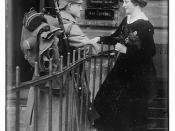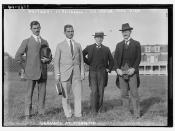During 1924-1929, the economics of Germany had a dramatic improvement. The "Golden age of Weimar", was due to the success of Gustav Stresemann. He achieved many successes in foreign affairs such as "Locarno treaties" which was signed by Germany, Britain, France and Italy, where the Germans agreed to accept the western frontiers decided at Versailles, in returns the Allies ended their military inspections, also Germany agreed to join the Treaty of Versailles which lower their reparation fees. With the help of USA, a loan of $800 million under the Dawes plan was given to Germany. Therefore the economics recovered in Germany. The unemployment was lowered. This also meant that there were new markets for German goods to be sold. The introduction of a new German currency (Retenmark) established by Stresemann and regulated by the central bank solved the problem of hyperinflation. Confidence returned to the German economy. There was a fascinating culture development of Germany during the time, in films, which had great influence from the war and movements of modern art, and artist who use their work to demonstrate against war.
The German films at the time reflected the fears of the times. The major idea of the films prefigured the rise of Hitler and the changes in during the Nazi era. According to Thomas Elsaesser, a professor who studies historical films and arts, he defines that "the Weimar films are reflecting the social upheaval, and Nazism; in Eisner, the demonstrable relation between German Romanticism." Anton Kaes (director of the film studies program at the University of California, Berkeley ) said that "Weimar films replayed the horrors and fears of the war: mass death, psychosis, apocalypse." The major series of films, firstly was the war content films such as the "All Quiet on the Western Front," which...


![[German vehicle tax registration issued to George Grantham Bain] (LOC)](https://s.writework.com/uploads/6/60390/german-vehicle-tax-registration-issued-george-grantham-bain-thumb.jpg)
Good essay
Well researched essay
2 out of 4 people found this comment useful.